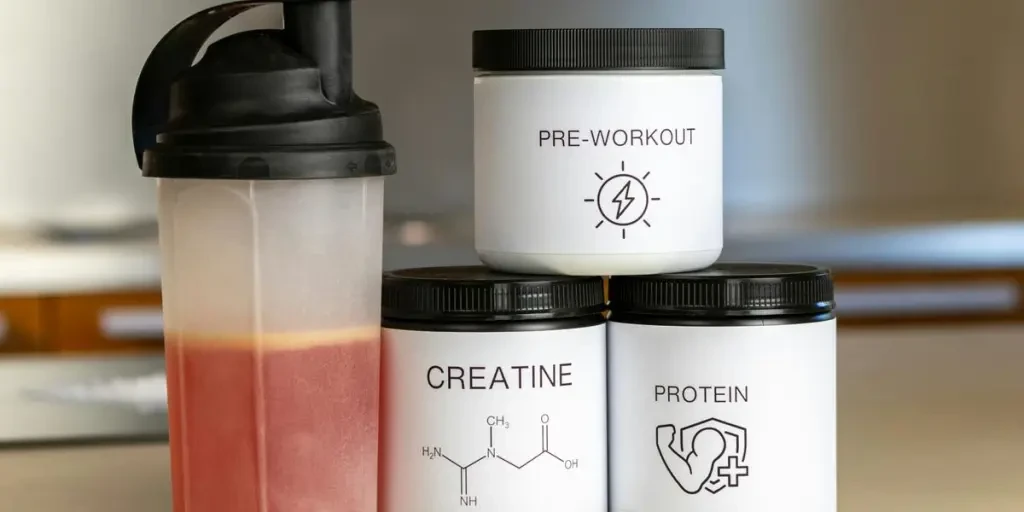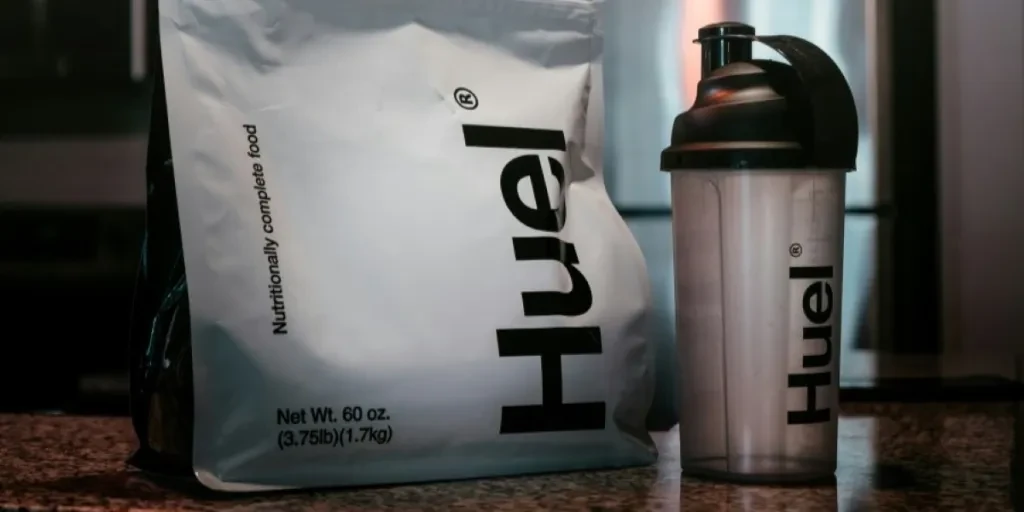The bulk protein market has seen significant growth in recent years, driven by increasing health consciousness and the rising demand for high-quality protein supplements. This article delves into the market overview, highlighting key trends and insights that are shaping the industry.
Table of Contents:
Market Overview of Bulk Protein
The Rise of High-Quality Materials in Bulk Protein
Innovative Designs and Packaging for Bulk Protein
Technological Advancements in Bulk Protein Production
Customization and Personalization in Bulk Protein
Market Overview of Bulk Protein

The global bulk protein market has experienced robust growth, with a significant increase in demand for protein supplements among athletes, bodybuilders, and health-conscious consumers. According to a professional report, the market size was valued at USD 194.99 billion in 2023 and is projected to reach USD 450.84 billion by 2030, growing at a compound annual growth rate (CAGR) of 12.71%.
Several factors contribute to this growth, including the rising awareness of the health benefits of protein, the increasing prevalence of lifestyle diseases, and the growing trend of fitness and wellness. Additionally, the expansion of the sports nutrition industry and the increasing number of gyms and fitness centers worldwide have further fueled the demand for bulk protein products.
Regional Insights
The bulk protein market is witnessing significant growth across various regions. In the Americas, the United States and Canada are leading the market due to the high demand for protein supplements and the presence of major market players. The Asia-Pacific region, particularly China, India, and Japan, is also experiencing rapid growth, driven by increasing disposable incomes, urbanization, and a growing awareness of health and fitness.
In Europe, countries like Germany, the United Kingdom, and France are prominent markets for bulk protein, supported by a strong tradition of fitness and wellness. The Middle East and Africa region is also showing potential for growth, with increasing investments in the health and fitness sector and a rising demand for protein supplements.
Key Players
The bulk protein market is highly competitive, with several key players dominating the industry. Some of the leading companies include:
- Glanbia Plc
- Optimum Nutrition, Inc.
- MusclePharm Corporation
- Abbott Laboratories
- Amway Corporation
These companies are focusing on product innovation, strategic partnerships, and expanding their distribution networks to gain a competitive edge in the market. For instance, Glanbia Plc has been investing in research and development to introduce new and improved protein products, while Optimum Nutrition, Inc. has been expanding its product portfolio to cater to a wider range of consumers.
Future Trends
The future of the bulk protein market looks promising, with several trends expected to shape the industry. One of the key trends is the increasing demand for plant-based protein supplements, driven by the growing popularity of vegan and vegetarian diets. According to a report by Research and Markets, the plant-based protein segment is expected to witness significant growth in the coming years, as consumers seek sustainable and ethical protein sources.
Another trend is the focus on personalized nutrition, with companies offering customized protein blends tailored to individual needs and preferences. This trend is driven by advancements in technology and the growing demand for personalized health and wellness solutions.
Sustainability
Sustainability is becoming a crucial factor in the bulk protein market, with consumers increasingly seeking products that are environmentally friendly and ethically sourced. Companies are responding to this demand by adopting sustainable sourcing practices, using eco-friendly packaging, and reducing their carbon footprint. For example, several companies are now using biodegradable and recyclable packaging materials to minimize environmental impact.
The Rise of High-Quality Materials in Bulk Protein

Organic and Natural Ingredients
The demand for organic and natural ingredients in bulk protein products has seen a significant rise in recent years. This shift is driven by consumers’ increasing awareness of health and wellness, as well as their desire for clean and sustainable nutrition options. According to a professional report, the global market for organic protein is expected to grow at a compound annual growth rate (CAGR) of 6.8% from 2021 to 2028. This growth is fueled by the rising preference for organic food products, which are perceived to be healthier and free from harmful chemicals and pesticides.
Organic protein sources, such as plant-based proteins from peas, hemp, and brown rice, are gaining popularity due to their natural and unprocessed nature. These ingredients are not only beneficial for health but also align with the growing trend of plant-based diets. Additionally, natural sweeteners like stevia and monk fruit are being used to replace artificial sweeteners, further enhancing the appeal of organic protein products.
Sustainable Sourcing and Production
Sustainability has become a key consideration in the production of bulk protein products. Companies are increasingly adopting sustainable sourcing practices to ensure that their ingredients are obtained in an environmentally friendly and socially responsible manner. This includes sourcing raw materials from suppliers who adhere to sustainable farming practices, such as crop rotation and reduced use of synthetic fertilizers and pesticides.
Moreover, sustainable production methods are being implemented to minimize the environmental impact of protein manufacturing. This includes reducing water and energy consumption, minimizing waste, and utilizing renewable energy sources. For instance, some companies are investing in advanced technologies like precision fermentation, which allows for the production of high-quality protein with a lower environmental footprint.
Innovative Designs and Packaging for Bulk Protein

Eco-Friendly Packaging Solutions
The packaging of bulk protein products is undergoing a transformation to meet the growing demand for eco-friendly solutions. Traditional plastic packaging is being replaced with biodegradable and recyclable materials to reduce plastic waste and its impact on the environment. The global market for sustainable packaging is projected to reach $412.7 billion by 2027, growing at a CAGR of 6.2% from 2020 to 2027.
Innovative packaging solutions, such as compostable pouches and containers made from plant-based materials, are being introduced to the market. These eco-friendly options not only reduce the carbon footprint but also appeal to environmentally conscious consumers. Additionally, companies are exploring the use of minimalistic packaging designs that use fewer materials and reduce overall waste.
User-Friendly and Convenient Packaging
In addition to being eco-friendly, the packaging of bulk protein products is becoming more user-friendly and convenient. This includes features like resealable pouches, easy-to-open lids, and portion-controlled packaging. These innovations enhance the consumer experience by making it easier to store, use, and transport protein products.
For example, single-serve packets and pre-measured scoops are becoming popular among consumers who lead busy lifestyles and seek convenience. These packaging options allow for precise portion control and reduce the risk of contamination, ensuring that the product remains fresh and safe to consume.
Technological Advancements in Bulk Protein Production

Enhanced Protein Extraction Techniques
Technological advancements have revolutionized the extraction and production of bulk protein. Enhanced protein extraction techniques, such as enzymatic hydrolysis and membrane filtration, have improved the efficiency and yield of protein extraction from various sources. These methods allow for the production of high-purity protein isolates with minimal impurities and better functional properties.
For instance, enzymatic hydrolysis involves the use of specific enzymes to break down protein molecules into smaller peptides, resulting in improved digestibility and bioavailability. Membrane filtration, on the other hand, uses semi-permeable membranes to separate proteins from other components, ensuring a high level of purity and concentration.
Advanced Quality Control Measures
Quality control is a critical aspect of bulk protein production, and technological advancements have significantly enhanced the ability to ensure product safety and consistency. Advanced quality control measures, such as high-performance liquid chromatography (HPLC) and mass spectrometry, are being used to analyze the composition and purity of protein products.
These techniques allow for the detection of contaminants, allergens, and adulterants, ensuring that the final product meets stringent quality standards. Additionally, real-time monitoring and automation in production facilities have improved the accuracy and efficiency of quality control processes, reducing the risk of human error and ensuring consistent product quality.
Customization and Personalization in Bulk Protein

Tailored Protein Blends for Specific Needs
The trend towards customization and personalization is gaining momentum in the bulk protein market. Consumers are increasingly seeking protein products that are tailored to their specific dietary needs and fitness goals. This has led to the development of customized protein blends that cater to various requirements, such as muscle building, weight management, and recovery.
For example, athletes and bodybuilders may prefer protein blends with a higher concentration of branched-chain amino acids (BCAAs) to support muscle growth and repair. On the other hand, individuals looking to lose weight may opt for protein products with added fiber and low-calorie content to promote satiety and reduce overall calorie intake.
Flavor and Texture Customization
Flavor and texture play a crucial role in the consumer experience of protein products. Companies are investing in research and development to create a wide range of flavors and textures that cater to diverse consumer preferences. This includes the use of natural flavorings and sweeteners to enhance the taste of protein products without compromising on health benefits.
Texture customization is also becoming important, with options ranging from smooth and creamy protein shakes to crunchy protein bars. These innovations not only improve the sensory experience but also increase the versatility of protein products, making them suitable for various applications, such as smoothies, baked goods, and snacks.
Conclusion
The bulk protein industry is undergoing a dynamic transformation driven by advancements in high-quality materials, innovative packaging, technological progress, and customization. As consumer preferences continue to evolve, the industry is poised to embrace sustainable practices, cutting-edge technologies, and personalized solutions to meet the diverse needs of the market.



